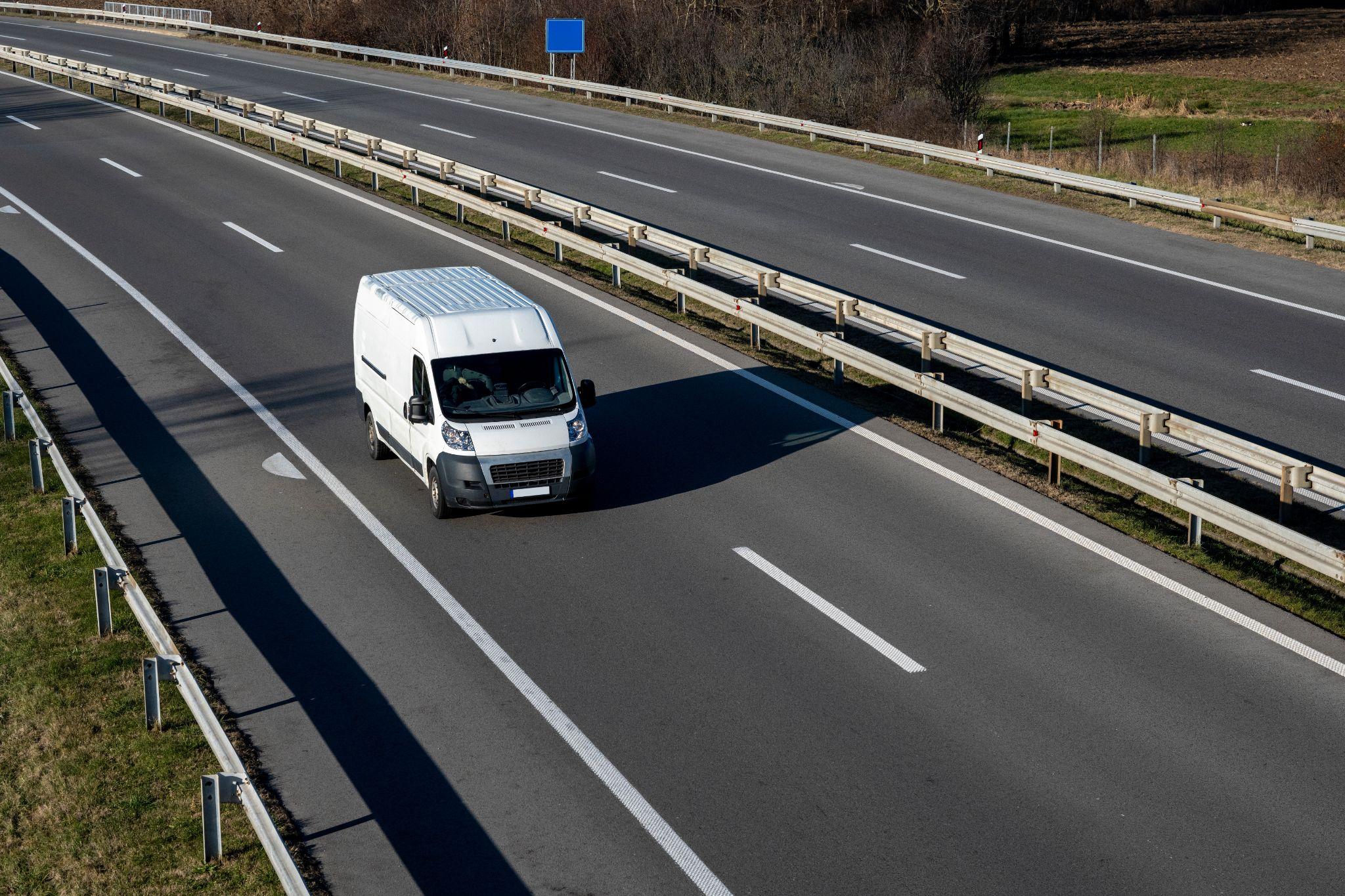Delivery is where customer expectations meet reality. The condition of the package, the timing, and the clarity of updates all send a stronger message about your business than advertising ever could.
Shoppers judge the value of your business not only on speed, but on how the delivery feels, how transparent it is, and whether it reflects the promise your brand made.
This is why improving the delivery brand experience is important. With CIGO Tracker, you gain the visibility and control to turn brand delivery into a differentiator. Each order becomes a chance to build trust and strengthen loyalty where it matters most.
Understanding “Brand Delivery”: Concepts and Industry Context

Brand delivery defines how logistics influences trust, loyalty, and perception. It sets the stage for clear experiences and final mile impact.
What is a Branded Delivery Experience?
A branded delivery experience is how your business presents itself at the customer’s door.
It is the moment where trust, care, and professionalism come together. According to PwC, 73% of customers say experience heavily influences their buying decisions.
That makes this stage impossible to overlook.
You can design delivery moments that highlight your brand by focusing on the details that customers actually remember:
- Communication: Timely, transparent updates that set expectations and ease concerns.
- Appearance: Packaging, uniforms, and vehicle presentation that reflect brand quality.
- Service style: Courteous, respectful interactions that build confidence in your team.
- Follow-up: Simple thank-you notes or surveys that invite feedback and show appreciation.
Generic delivery lacks these elements. Branded delivery turns them into loyalty-building touchpoints.
Why the Final Mile Is Critical for Brand Impressions
The final mile is where expectations meet reality. At this moment, you are judged on clarity, timing, and care.
For e-commerce and B2B alike, the handoff shapes brand equity and moves NPS.
A peer-reviewed study in Sustainability (MDPI) reports that meeting promised deadlines and offering convenient options, such as lockers, strongly boosts satisfaction and future purchase intent.
Because the doorstep is often the only physical touchpoint buyers see, its impact compounds across reviews and referrals.
Brands win when drivers greet customers by name, packaging arrives clean, and status updates match reality. They lose when windows slip, parcels look rough, or silence follows a missed stop.
You influence these outcomes. With tight orchestration, transparent communication, and consistent service standards, you transform a routine drop into a brand statement and into loyalty.
Why Improve the Delivery Brand Experience?
Improving delivery brand experience pays off fast. You influence repeat sales, advocacy, and lifetime value at the doorstep. When you reduce confusion and show care, you lower support friction and strengthen loyalty.
You also create separation in crowded markets.
- Drive revenue: Clear, consistent delivery moments encourage second purchases and referrals.
- Cut WISMO: Proactive updates reduce “Where is my order?” contacts and keep you focused on fulfillment. Learn how to minimize WISMO with transparent tracking.
- Differentiate: Professional appearance, reliable ETAs, and thoughtful follow-up signal quality customers remember.
You control these levers. With deliberate standards and tools, each stop becomes a brand asset.
Key Elements of an Effective Branded Delivery Strategy
An effective strategy connects every touchpoint so the experience feels intentional. You align systems, people, and visuals because consistency builds trust at the door.
- Branded tracking and communication: Centralize SMS, email, and app updates. Set accurate ETAs, use your voice, and route exceptions quickly. Check out tracking best practices.
- Consistent visual identity: Match uniforms, vehicle graphics, packaging, and delivery materials. Recognition happens instantly, so confidence follows.
- Personalized updates: Include name, order context, and location-aware instructions. Messages feel helpful, not noisy.
- Professional, trained staff: Coach greeting, handling, and issue resolution. The driver represents your brand on the doorstep.
- Seamless post-delivery: Send instant feedback links, thank-you notes, and targeted offers. You close the loop and learn what to improve next.
Steps to Building a Cohesive Brand Delivery Model

To build a cohesive brand delivery model, map touchpoints, align tools, train teams, refine packaging, and act on feedback.
Step 1: Mapping the Customer Journey
Start by mapping every delivery touchpoint you influence.
Chart order confirmation, tracking views, ETA changes, out-for-delivery alerts, proof of delivery, returns. Include channels, timestamps, owners, and SLAs so dependencies show.
Then trace what customers experience; compare promised windows with reality, and note emotion.
Next, identify gaps that create WISMO friction; clarity reduces customer load.
- Pin the pain: Moments that confuse or delay.
- Mark the handoffs: Between the warehouse, carrier, and support.
Finally, document scripts and visuals; you now have a blueprint to test and improve.
Step 2: Aligning Technology Tools with Brand Guidelines
Align your tech stack to your brand so every signal feels intentional. Define tone, visuals, and timing for tracking, notifications, and portals, because coherence builds trust.
Map data flows across OMS (Order Management System), WMS (Warehouse Management System), TMS (Transportation Management System), and carriers; shared accuracy targets keep promises realistic.
- Branded tracking: single URL, live map, reliable ETAs, outage fallback.
- Notifications: SMS, email, app; templates, quiet hours, preferences, early escalation.
- Portal UX: self-service reattempts, safe drop choices, support handoff, accessibility.
- Governance and data: aligned IDs, deduped events, timezone handling, versioning.
Assign owners and SLAs, instrument dashboards, and test in the sandbox; consequently, gaps close fast and touchpoints support brand standards.
Step 3: Training and Empowering Delivery Teams
Equip drivers to act as brand ambassadors at the doorstep. You set standards, coach behaviors, and give authority to solve small issues quickly.
- Pre-shift coaching: greeting scripts, tone, accessibility cues.
- Role-play: handling delays, refusals, and damaged goods.
- Tools mastery: app workflows, photo capture, exception coding.
- Empowerment rules: reattempts, safe drop options, goodwill credits within limits.
- Performance loop: doorstep NPS, quick call-backs, peer coaching.
With feedback loops and clear KPIs, performance improves rapidly, and final-mile service feels truly consistent over time.
Step 4: Customizing Packaging and Presentation
Treat packaging as part of the overall experience, not just a means of protection.
You design materials, colors, and inserts to echo your identity, while sizing reduces waste and damage.
Clear labels, tamper seals, and scannable codes signal care. Sustainable choices matter because values at the doorstep influence perception.
Guide the unboxing: simple instructions, return steps, and a human thank-you. Add a QR for feedback and tips. Ensure carriers handle parcels upright and clearly.
Lastly, capture proof-of-delivery photos that showcase clean branding and intact packaging.
Step 5: Collecting and Acting on Customer Feedback
Capture feedback at the doorstep and immediately after delivery, so insights arrive while the moment is fresh.
Use SMS links, QR codes, and one-question pulses to reduce friction. Tag each response by route, driver, issue type, and time window. This helps patterns surface quickly.
Because context is clear, you can separate one-off mistakes from systemic gaps.
Close the loop. Acknowledge issues, fix root causes, and tell customers what changed. Weekly reviews align teams, while live dashboards prioritize high-impact fixes and guide your next improvement.
The Role of Technology Platforms in Brand Delivery

Modern logistics platforms turn brand delivery into a repeatable system you can scale. They coordinate tracking, notifications, and service workflows so each touchpoint mirrors your standards.
A 2024 peer-reviewed study on MPDI reports that speed, price, and courier contact drive satisfaction, while parcel tracking is now expected.
- Automate branded notifications and workflows: event triggers, exception playbooks, quiet hours, preference centers, SLA timers, and outage fallbacks that protect promises.
- Personalize at scale using customer data: names, order context, location-aware instructions, dynamic ETAs, and targeted outreach that feels useful, not noisy.
- Integrate with CRM, WMS, OMS, and feedback loops: unified IDs, deduped events, bi-directional tickets, and dashboards that surface WISMO drivers and resolution speed.
Put together, you cut avoidable contacts, boost loyalty, and give leaders clear metrics to steer improvements.
CIGO Tracker Spotlight: Delivering Your Brand, Everywhere
CIGO Tracker turns delivery operations into branded moments at scale, aligning communication, portals, and workflows to protect trust everywhere.
Branded Notifications, Portals, and Live Status
Connect every update so people see one clear story. CIGO Tracker triggers email and SMS notifications, keeping people informed. Real-time status via tracking links aligns expectations and reduces guesswork.
- Live map and flexible ETA notifications align timing and reduce WISMO.
- Proof of delivery with photos and signatures confirms completion and prevents disputes.
- Drivers receive route-change alerts and dispatcher messages, so pivots stay coordinated.
- Real-time tracking and route optimization guide efficient routes and timely arrivals.
Together, these touchpoints present your brand reliably at every stop.
Custom Workflows for Your Signature Experience
CIGO automates workflows that follow your standards.
Event triggers, SLA timers, and exception routing keep promises on track. Region rules, quiet hours, and preference centers adapt to local norms, so messages feel respectful. Because the platform syncs with CRM and OMS, your team sees full context and resolves issues faster.
You refine as you go. A/B test message content, tune handoffs, and audit outcomes with built-in logs. With ownership defined and playbooks documented inside CIGO, each route follows a shared script while still flexing to unique needs.
For structure and governance patterns that scale, our dispatch workflow guide shows practical steps.
Launching Your Branded Delivery Experience
Launch your branded delivery with a clear plan. Start quickly, learn quickly, and connect every touchpoint so people experience the same promise at the door.
- Audit: map touchpoints, messages, SLAs, visuals; identify WISMO triggers and ownership gaps.
- Define: set tone, templates, visual rules, quiet hours, and escalation paths; document examples.
- Implement: integrate tracking, notifications, proof of delivery, and preference center; pilot one region.
- Measure and optimize: track NPS, WISMO rate, repeat purchase, and on-time windows; iterate weekly.
- Best practices: train partners on scripts, packaging standards, accessibility, and recovery gestures consistently.
Overcoming Common Challenges and Concerns
How do I balance cost and brand delivery improvements?
Start with low-cost levers that move results quickly. Standardize templates, tighten ETAs, and add proof-of-delivery photos.
Improving delivery brand experience often cuts WISMO, which reduces support workload and refunds. Reinvest those savings into packaging, training, and analytics. Cost discipline plus clear priorities creates durable gains.
Is brand delivery achievable with third-party carriers?
Involve carriers early and codify standards. Share templates, quiet hours, escalation paths, and packaging rules.
Brand delivery works with third parties when playbooks, SLAs, and audits exist.
Use driver photos, name badges, and portal language to keep identity consistent, while dashboards verify compliance daily.
What are the risks of over-branding or customer fatigue?
Too many pings feel noisy. Over-branding can crowd the message and slow actions.
Limit updates to key milestones, honor quiet hours, and let people set preferences. Improving delivery brand experience relies on relevance, not volume. Crisp copy, helpful links, and clear outcomes keep engagement high.
How can I ensure consistency at scale?
Create a service blueprint and treat it like code. Version templates, lock visual rules, and automate event triggers.
Train teams with short play videos and doorstep checklists. Monitor NPS, WISMO rate, and first-attempt success. Consistency grows when standards live inside tools that schedule work.
Which KPIs should I track first?
Start with a small scorecard that ties brand delivery to outcomes. Track on-time windows, WISMO per 100 orders, repeat purchase rate, and review sentiment. Improving delivery brand experience should show in fewer support tickets and stronger satisfaction comments within weeks.
Brand Delivery as a Strategic Advantage

Delivery shapes brand value where it counts. When tracking, timing, and doorstep care line up, loyalty grows, support costs fall, and your reputation strengthens.
Improving the delivery brand experience turns every stop into proof that you keep promises.
What would move the needle fastest for you right now: clearer notifications, tighter ETAs, or stronger doorstep standards?
CIGO Tracker helps you operationalize brand delivery with branded portals, automated updates, and measurable workflows. You gain visibility, control, and momentum without adding complexity.
Request a demo, see CIGO in action, or contact our logistics team to assess your next steps and start improving delivery brand experience today.





